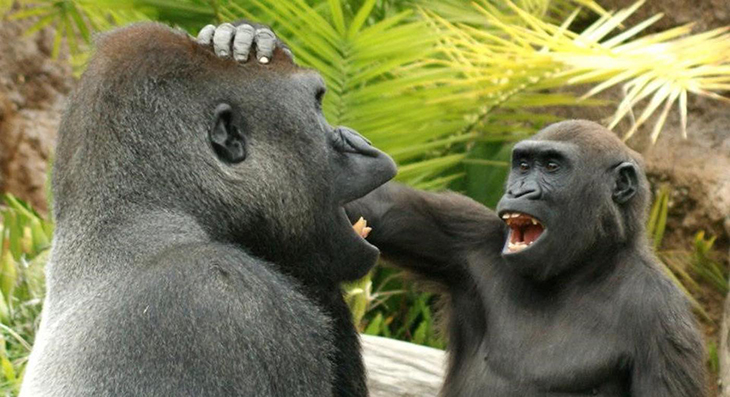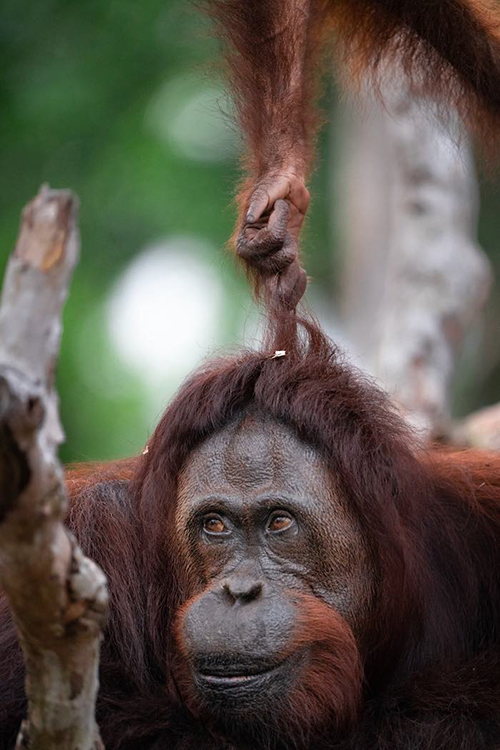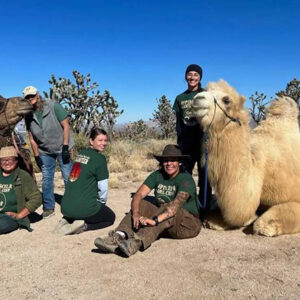
A recent study suggests that apes possess a sense of humor akin to humans, as evidenced by playful teasing observed among four different species of great apes.
A team of cognitive biologists and primatologists discovered that ape teasing shares characteristics with human joking behavior, such as being provocative, persistent, and involving elements of surprise and playfulness.
This finding leads the research team to speculate that the evolutionary roots of humor likely trace back millions of years within the human lineage, considering the presence of playful teasing in orangutans, chimpanzees, bonobos, and gorillas.
The researchers highlight the significance of joking in human social interactions, attributing it to social intelligence, the ability to anticipate future actions, and the capacity to recognize and appreciate the violation of others’ expectations. They propose that playful teasing serves as a “cognitive precursor” to joking, indicating its evolutionary importance. (See the adorable video shown at the bottom of this article.)
Notably, playful teasing emerges in humans as early as eight months of age, preceding the development of speech. Infants engage in teasing behaviors with caregivers, such as offering and withdrawing objects in a playful manner, thereby violating social norms and disrupting ongoing activities.

This study, published in the journal Proceedings of the Royal Society B, involved scientists from the University of California in Los Angeles and San Diego, Indiana University, and the Max Planck Institute of Animal Behavior in Germany.
Study first author, Dr. Isabelle Laumer, says, “Great apes are excellent candidates for playful teasing, as they are closely related to us, engage in social play, show laughter and display relatively sophisticated understandings of others’ expectations.”
The researchers categorized spontaneous interactions among apes as playful, mildly harassing, or provocative, closely observing the actions, movements, and facial expressions of both the teaser and the target of the teasing, which can be seen in the video below.
“It was common for teasers to repeatedly wave or swing a body part or object in the middle of the target’s field of vision, hit or poke them, stare closely at their face, disrupt their movements, pull on their hair or perform other behaviors that were extremely difficult for the target to ignore,” said the study’s senior author UCLA Professor Erica Cartmill.
While playful teasing shares similarities with human behavior, the researchers noted differences between teasing and play. Playful teasing typically occurred during relaxed moments, mirroring human interactions.
The study identified 18 distinct teasing behaviors among orangutans, chimpanzees, bonobos, and gorillas, with many behaviors aimed at provoking a response or gaining the target’s attention.
“Playful teasing in great apes is one-sided, very much coming from the teaser often throughout the entire interaction and rarely reciprocated,” said Prof. Cartmill. “The animals also rarely use play signals like the primate ‘playface’, which is similar to what we would call a smile, or ‘hold’ gestures that signal their intent to play.”
The researchers observed that playful teasing predominantly occurred among apes during relaxed moments, displaying similarities to behaviors found in humans.
Dr. Laumer says, “Similar to teasing in children, ape teasing involves one-sided provocation, response waiting—in which the teaser looks towards the target’s face directly after a teasing action—repetition, and elements of surprise.”
Although previous observations by primatologists like Jane Goodall mentioned similar behaviors in chimps, this study represents the first systematic investigation into playful teasing among great apes.
“We hope that our study will inspire other researchers to study playful teasing in more species in order to better understand the evolution of this multi-faceted behavior,” said Dr. Laumer.
“We also hope that this study raises awareness of the similarities we share with our closest relatives.”
What are your thoughts? Please comment below and share this news!
True Activist / Report a typo


